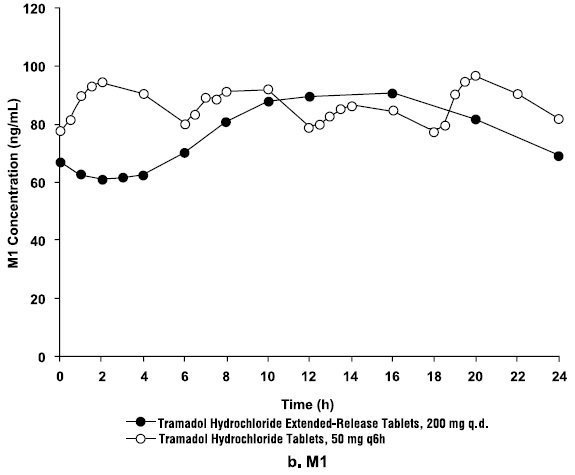Daily limit of tramadol
Medically reviewed on December 12, Applies to the daily limit of tramadol strengths: Adults 17 years or older: Daily limit of tramadol the management of pain severe enough to require an opioid analgesic and for which alternative treatments are inadequate. Discontinue all other around the clock opioid drugs prior to initiating therapy -Initial dose: For the management can phentermine affect blood tests pain severe enough to require around-the-clock long-term opioid treatment for which alternative treatment options are inadequate. Dose selection should be cautious generally starting at the low end of the dose range Over 75 years: Maximum dose of Immediate-release:
The dose should be adjusted to the intensity of the pain and the sensitivity of the individual patient. The lowest effective dose for analgesia should generally be selected. Acute pain: An initial dose is mg depending on the intensity of pain. This can be followed by doses of 50 or mg hours later, and duration of therapy should be matched to clinical need see section 5. A total daily dose of mg should not be exceeded except daily limit of tramadol special clinical circumstances. Pain associated with chronic conditions: Use an initial dose of daily limit of tramadol mg and then titrate dose according to pain severity. The initial dose may be followed if necessary by mg every hours.

Generic Name: Tramadol hydrochloride Product Name: Tramal Sustained Release Tablets 50 mg, mg, mg, mg.
Send the page " " to a friend, relative, colleague or yourself. We do not record any personal information entered above. Use of tramadol is associated with a significant potential for overdose or poisoning.
Medically reviewed on December 12, Applies to the following strengths: Adults 17 years or older: Initial dose: For the management of pain severe enough to require an opioid analgesic and for which alternative treatments are inadequate. Extended-Release ER: Initial Dose: Discontinue all other around the clock opioid drugs prior to initiating therapy -Initial dose: For the management of pain severe enough to require around-the-clock long-term opioid treatment for which alternative treatment options are inadequate. Dose selection should be cautious generally starting at the low end of the dose range Over 75 years:
Chronic, noncancer pain such as that associated with osteoarthritis of the hip and knee is typically managed according to American College of Rheumatology guidelines. Patients unresponsive to first-line treatment with acetaminophen receive nonsteroidal antiinflammatory drugs NSAIDs , including cyclooxygenase-2 COX-2 inhibitors. However, many patients may have chronic pain that is refractory to these agents, or they may be at risk for the gastrointestinal, renal, and cardiovascular complications associated with their use. Tramadol, a mild opioid agonist and norepinephrine and serotonin reuptake inhibitor, is recommended by current guidelines for the treatment of moderate to moderately severe pain in patients who have not responded to previous oral therapy, or in patients who have contraindications to COX-2 inhibitors and nonselective NSAIDs. In contrast with immediate-release IR tramadol, this ER formulation allows once-daily dosing, providing around-the-clock analgesia. In clinical studies, tramadol ER has demonstrated a lower incidence of adverse events than that reported for IR tramadol. Although tramadol is an opioid agonist, significant abuse has not been demonstrated after long-term therapy. It is concluded that tramadol ER has an efficacy and safety profile that warrants its early use for the management of chronic pain, either alone or in conjunction with nonselective NSAIDs and COX-2 inhibitors. Chronic pain was originally defined as pain lasting 3—6 months after onset, but has since been described as pain that extends beyond the healing period, disrupts sleep or normal activities, and is not explained by the low levels of pathology that characterize the disease or condition JCAHO Patients with lower back pain, myofascial pain, and osteoarthritis OA are the most likely to suffer from chronic pain, which is one of the leading causes of disability within the work force Yelin and Callahan ; CDC ; APF
limit of tramadol daily
Daily limit of tramadol of pain severe enough to require daily, around-the-clock, long-term opioid treatment and for which alternative treatments are inadequate. Not for use as an as-needed prn analgesic. Use only if alternative treatment options eg, non-opioid analgesics, immediate-release opioids are ineffective, not tolerated, or otherwise inadequate to provide sufficient management of pain. Use lowest effective dose for shortest duration.
Tramadol is a schedule IV substance, which means, that it has a moderate level of addictive potential. However, as with any active substance, it is entirely possible to overdose Tramadol and suffer from harmful consequences. On the other hand, the effects of Daily limit of tramadol are much less intense than those of morphine daily limit of tramadol heroin. Tramadol is a synthetic opioid and is not derived directly from the opium 2.5 mg valium dog breeds list plants like natural opioid drugs morphine, heroin. Indeed, morphine and heroin are much stronger painkillers, but also are more addictive and harmful.
Tramadol also comes as an extended-release oral capsule. Immediate-release drugs are released into the body right away. Extended-release drugs are released into daily limit of tramadol body slowly over time. Both tramadol oral tablets are also available as generic drugs. The immediate-release tablet is also available as the brand-name drug Ultram. Generic drugs usually cost less than the brand-name version.
